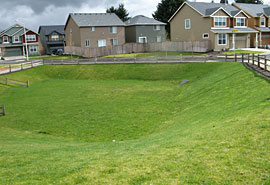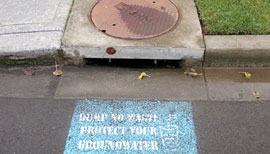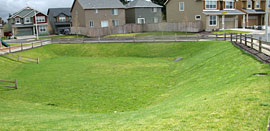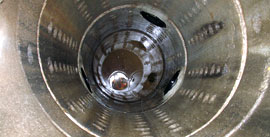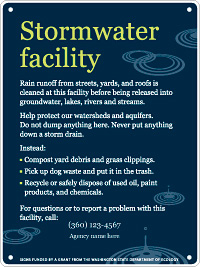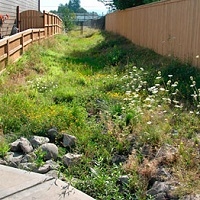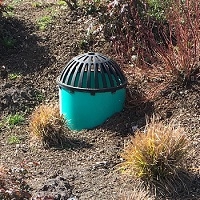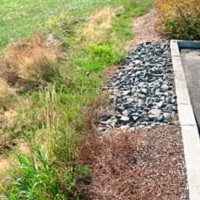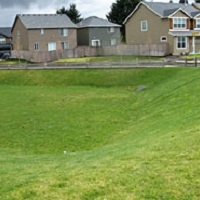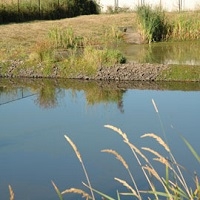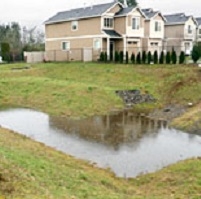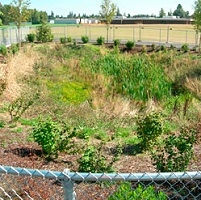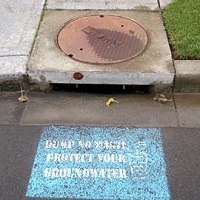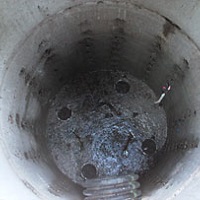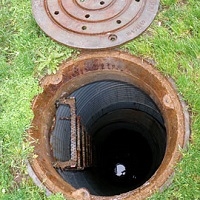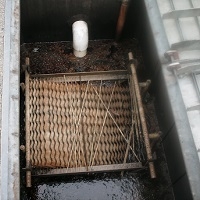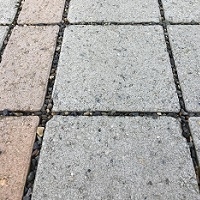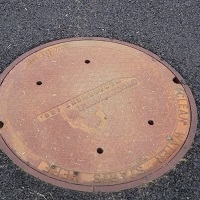Rainwater becomes stormwater when it falls on a hard surface that drains to the storm sewer. As stormwater flows off roofs, streets, and parking lots it picks up pollutants such as sediment, pet waste, motor oil, fertilizers, yard debris and litter, which are carried to nearby streams.
Stormwater facilities and LID (low impact development) play an important role in removing pollution and controlling the flow of stormwater runoff. Local governments AND private property owners are responsible for managing stormwater runoff. If you have stormwater facilities or LID in your development you need to find out how to inspect and maintain them. Staying on top of maintenance saves time and money while protecting the health of our streams.
Facilities maintenance guidelines
Click on the photos to learn more about your type of facility and how to maintain it. Follow the links below to view the official maintenance manual for your jurisdiction.
Maintenance manuals
These resources provide maintenance standards and describe conditions for when maintenance is needed. Check with your local jurisdiction for more information.
- Stormwater Management Manual for Western Washington (SMMWW) - this manual, or an equivalent, is used by all cities and jurisdictions in Clark County. Contact your local jurisdiction for more information.
- Clark County Stormwater Manual Book 4 - Maintenance and Operations - this manual applies to unincorporated Clark County as a regulatory tool. It is approved as equivalent to the SMMWW and also includes maintenance standards for additional BMPs and assets not included in the SMMWW.
Swales
Ponds
Underground
Commercial stormwater features
Commercial properties could have unique stormwater features in addition to those typically found in residential areas. These features, sometimes called Low Impact Development (LID), include pervious pavement, which allows rain on parking lots and walkways to soak into the ground rather than run off; oil/water separators, underground structures typically located in parking lots and at automotive businesses; and sand filters which can be located above or below ground.
Because these features often are out of sight or blend into their surroundings, maintenance can easily be forgotten or overlooked. Regular inspection and cleaning are important to keep these structures functioning properly and avoid potentially costly repairs. Maintenance is a requirement of state stormwater rules and local stormwater ordinances. See a map of LID sites across Clark County here.
Maintenance
Residents
The best way to limit big repairs and ensure that your facilities are working properly is to follow a regular inspection and maintenance plan. For small, simple facilities, such as biofiltration swales, much of the maintenance can be done by neighbors or landscape professionals. More complex facilities may require professional maintenance and repair.
You should have a current maintenance plan for your neighborhood's stormwater facilities. A plan might be outlined in your HOA's records or your CC&Rs. If neither is available, a maintenance plan must be formulated.
Contractors
Watch this presentation on private stormwater facility maintenance for contractors for information on different facility types, maintenance expectation and tips for preparing a bid.
